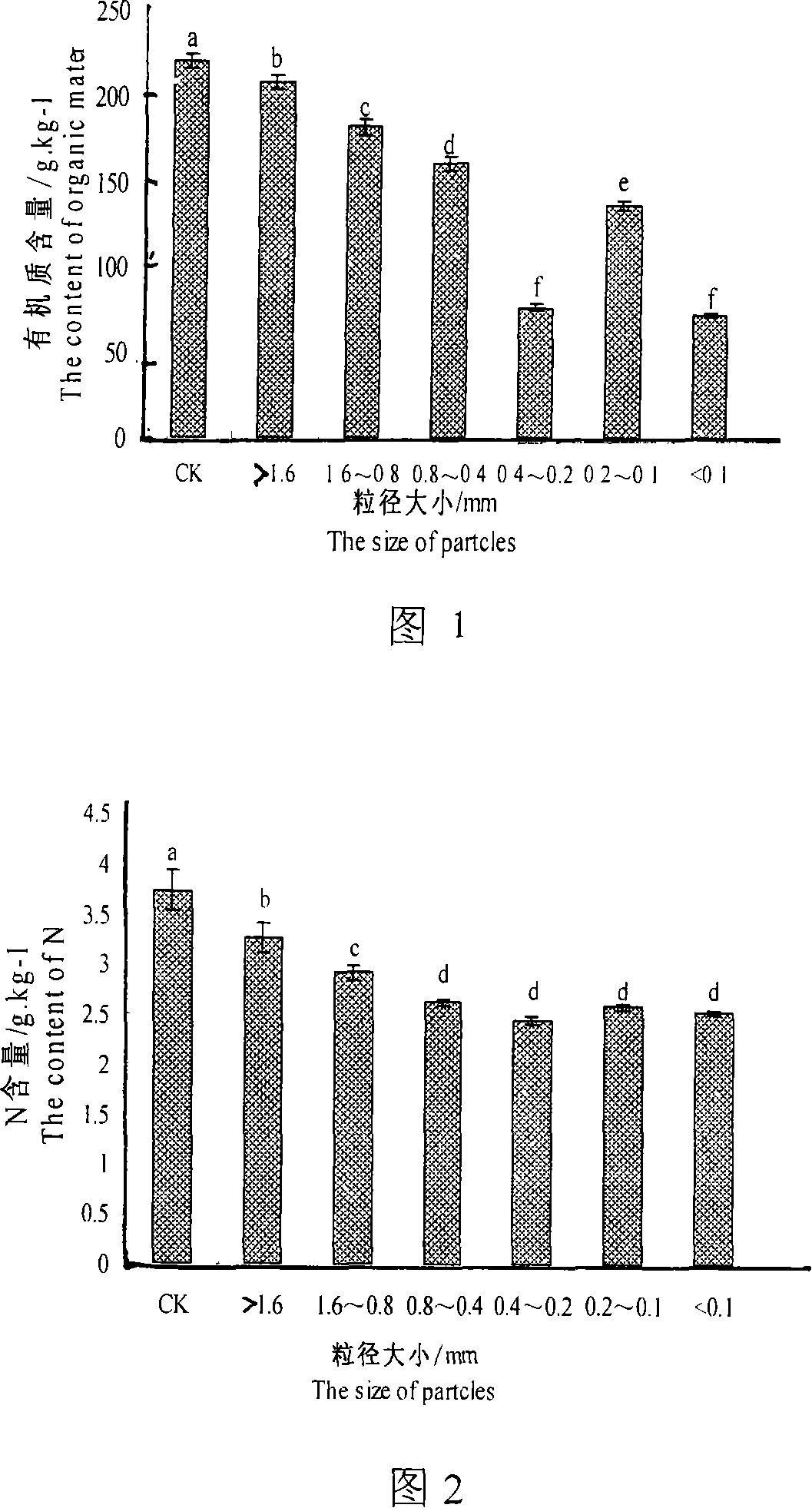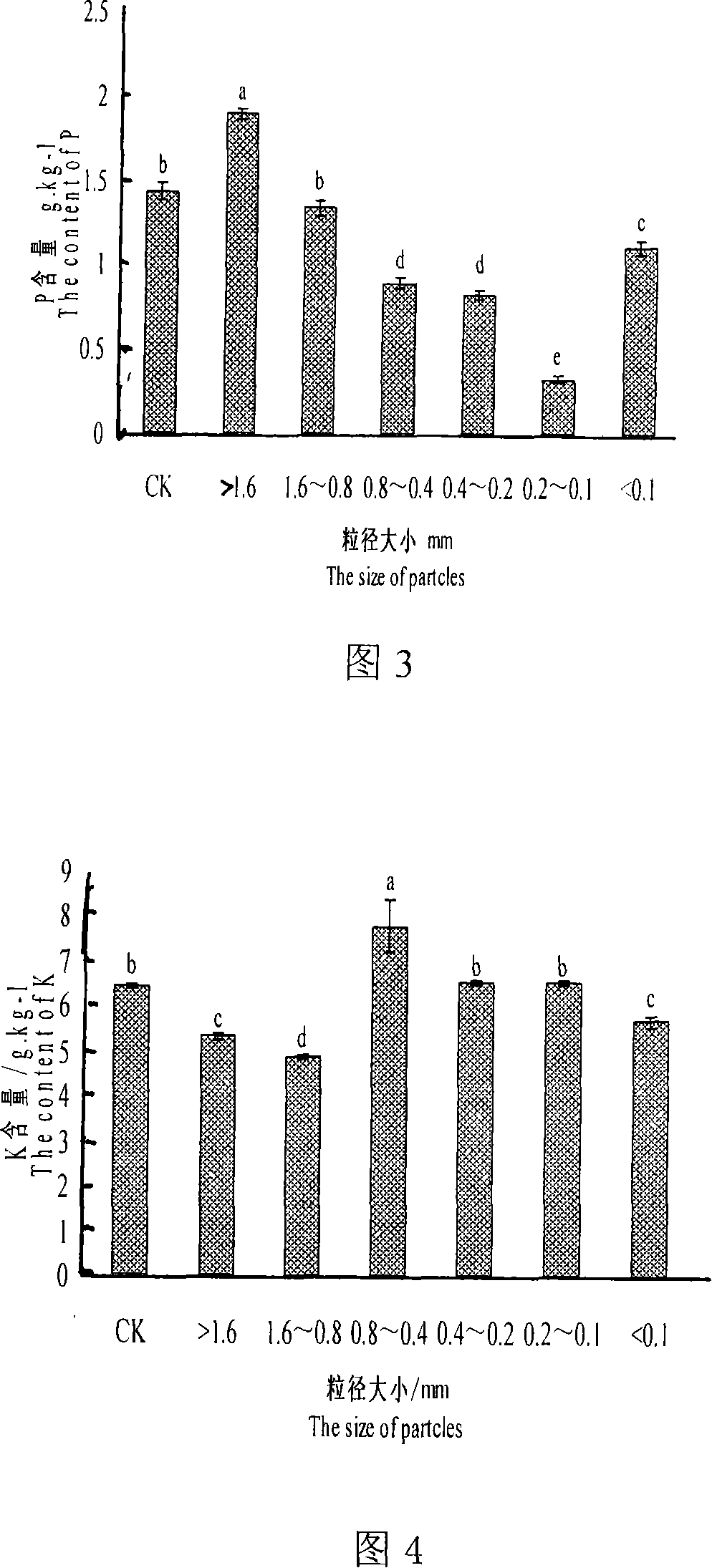Method for controlling heavy-matal pollution by domestic waste compost particle sizing
A domestic garbage and garbage composting technology, which is applied in the field of agricultural and environmental sciences, can solve the problems of garbage composting with different particle sizes that have not been reported in the literature.
- Summary
- Abstract
- Description
- Claims
- Application Information
AI Technical Summary
Problems solved by technology
Method used
Image
Examples
Embodiment 1
[0051] The waste compost taken from the Xiaodian domestic waste composting treatment plant in Tianjin is first manually picked up to remove all kinds of wood, plastic, glass, metal and other sundries in the waste compost. Garbage composting is sieved by standard sieves with different apertures, and is divided into 6 compost particle size grades of >1.6mm, 1.6-0.8mm, 0.8-0.4mm, 0.4-0.2mm, 0.2-0.1mm, and <0.1mm for treatment . Then do a comparative test:
[0052] (1) Get garbage compost > 1.6mm particle size 65%, powder slag (common soil) 35%, plant small tomato, add water is 45% of batching total amount, plant 30 days, measure the effect of heavy metal content on small tomato in the soil influences.
[0053] (2) Garbage compost CK (contrast) 65% and slag (common soil) 35% without sieving, plant small tomatoes, the amount of water added is 45% of the total amount of ingredients, plant for 30 days, measure the impact of heavy metal content on small tomatoes in the soil Impact....
Embodiment 2
[0058] The garbage compost taken from the domestic garbage composting treatment plant is first manually picked up to remove all kinds of wood, plastic, glass, metal and other sundries in the garbage compost. , 1.6 ~ 0.8mm, 0.8 ~ 0.4mm, 0.4 ~ 0.2mm, 0.2 ~ 0.1mm, <0.1mm 6 compost particle size grades as treatment. Then do a comparative test:
[0059] Through the soil culture experiment of the potted plant, the effect of applying compost with sub-sieve>1.6mm on bioavailability and effective state content in soil was studied. The results showed that the content of available microelements in the soil increased with the application of waste compost with size >1.6 mm.
[0060] (1) Garbage compost > 1.6mm particle size 70%, powder slag (common soil) 30%, plant red string, add water to 50% of the total ingredients, plant for 15 days, measure the influence of trace elements in the soil on red string , the resulting clusters are bright red and shiny, with a long flowering period and go...
Embodiment 3
[0065] The garbage compost taken from the domestic garbage composting treatment plant is first manually picked up to remove all kinds of wood, plastic, glass, metal and other sundries in the garbage compost. , 1.6 ~ 0.8mm, 0.8 ~ 0.4mm, 0.4 ~ 0.2mm, 0.2 ~ 0.1mm, <0.1mm 6 compost particle size grades as treatment. Then do a comparative test:
[0066] (1) Take 70% of 1.6-0.8mm particle size garbage compost, 30% of powder residue (ordinary soil), plant cactus, add water as 50% of the total amount of ingredients, plant for 30 days, and measure by cactus potted soil cultivation experiment The effect of trace elements in soil on cactus, and the effect of sub-sieving 1.6-0.8mm garbage compost on the appearance of cactus was studied. The results showed that the cactus leaves were dark green and shiny.
[0067] (2) Garbage compost CK (contrast) 70% and slag (ordinary soil) 30% without screening, plant cactus, add water for 50% of the total amount of ingredients, plant for 30 days, and...
PUM
 Login to View More
Login to View More Abstract
Description
Claims
Application Information
 Login to View More
Login to View More - R&D
- Intellectual Property
- Life Sciences
- Materials
- Tech Scout
- Unparalleled Data Quality
- Higher Quality Content
- 60% Fewer Hallucinations
Browse by: Latest US Patents, China's latest patents, Technical Efficacy Thesaurus, Application Domain, Technology Topic, Popular Technical Reports.
© 2025 PatSnap. All rights reserved.Legal|Privacy policy|Modern Slavery Act Transparency Statement|Sitemap|About US| Contact US: help@patsnap.com


